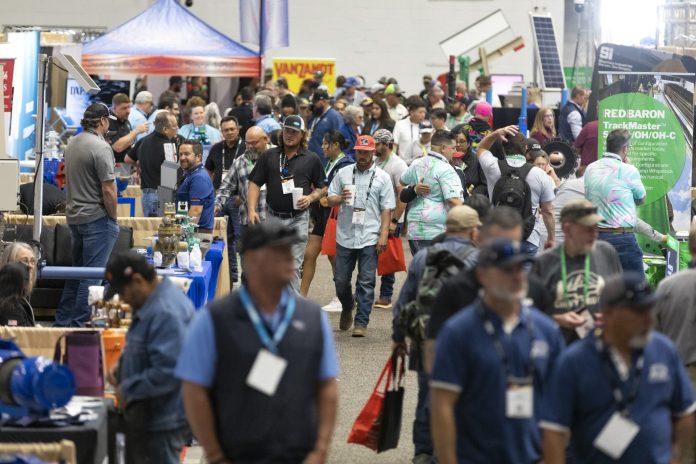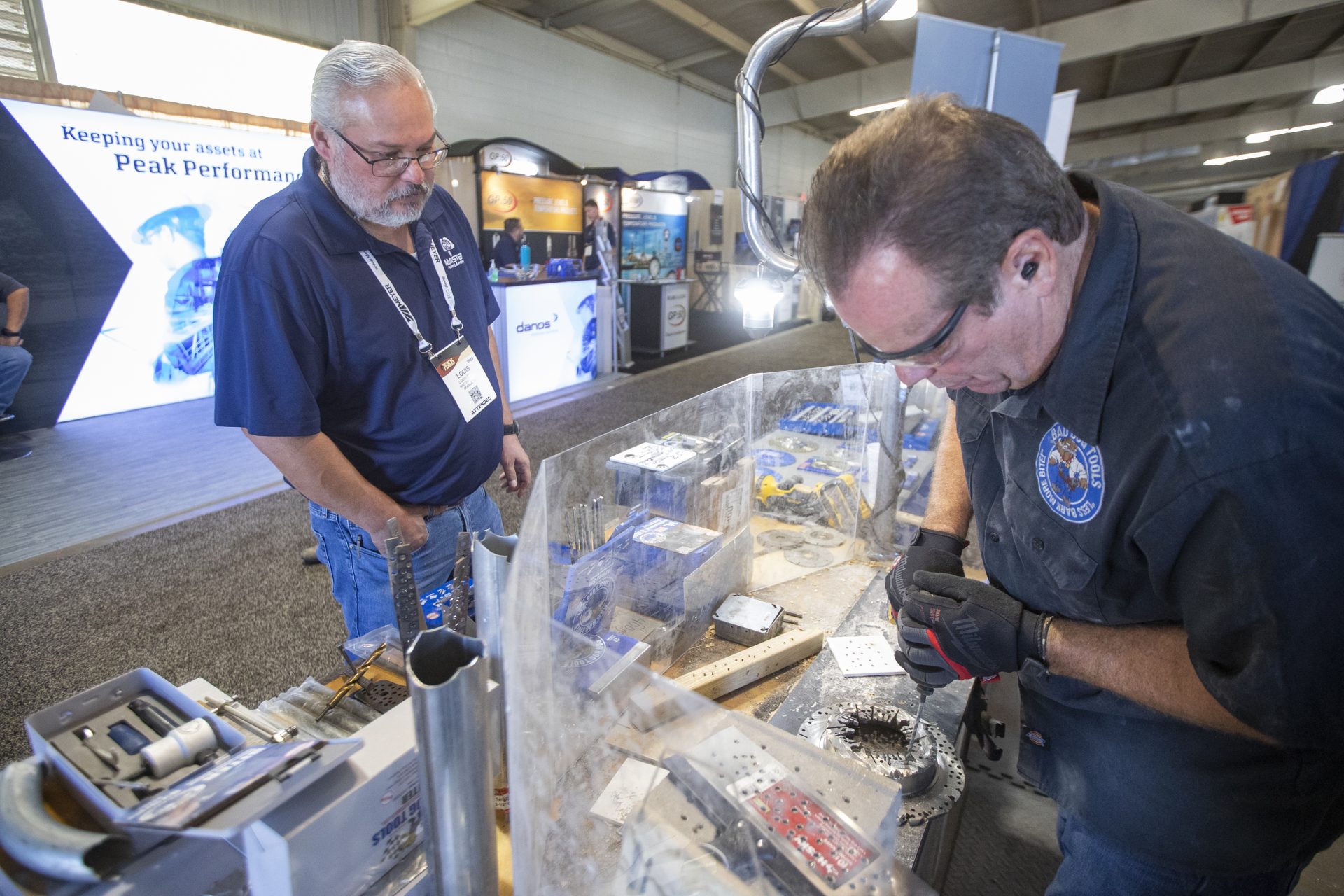
Like a ballpark on a rainy day, the Ector County Coliseum and its grounds are quiet now with no trace of the rambunctious high-dollar Permian Basin International Oil Show that drew 22,771 energy professionals who pored over and often bought the world’s latest, most advanced oilfield technology.
But the memory of its milling, enthusiastic crowds and the business it generated Oct. 17-19 will last for a good long while.
That’s according to Show Executive Director Tony Fry and President Larry Richards, who say the 750 exhibitors were ecstatic about the results.
Fry said Thursday that the registered attendance increased by about 4,500 from the 2018 and ’21 exhibitions when bad weather and then the pandemic held the numbers down.
“The grounds were full on Tuesday and Wednesday and Thursday was the closing day,” Fry said. “The industry personnel were very interested in the equipment being displayed. They were happy to have the chance to get out and go see everything and we were certainly blessed to have good weather.”
Noting that the quality and relevance of equipment and the business action were as important as the attendance, he said, “We had good contractors who worked with us and we greatly appreciate our volunteers and the county for repainting the coliseum and making improvements to the bathrooms and grounds.
“They kept everything looking clean and that goes a long way.”

Longtime Odessa industrialist Dick Sivalls was named the show’s Honoree in a ceremony at the show’s opening.
Richards reported “great feedback from exhibitors from all over the country.
“They spent a lot of money to move in big, heavy equipment and technology and they made very significant sales,” he said, adding that attendance reports from the old days were sometimes exaggerated. “I talked to two CEOs who had over $10 million in purchasing authority.
“Everyone did an amazing job and the Good Lord took care of the weather.”
Richards said the new streamlined registration process worked well as did the shuttle system to and from overflow parking nearby off 42nd Street and at Ratliff Stadium.
“The main parking lot was completely full,” he said. “We’ll be having a board meeting to get feedback on what went well and what we might improve on for the next show in 2025.”
Richards was especially pleased with the cable-tool drilling rig from the 1920s and ‘30s that ran throughout the show with some wooden parts from the rig that drilled an average of 4.7 feet per day for 646 days to bring in the Santa Rita No. 1 well on Sept. 27, 1923, near Big Lake, 90 miles southeast of Odessa, that was the Permian Basin’s first big oil strike.
“They had to do a fishing job because somebody accidentally dropped a small piece of pipe into the well bore,” he chuckled. “They had a 1931 compressor that moved the flare gas and an old sucker rod line unit moving the pumpjack.
“It was a neat contrast to the latest technology and, I thought, the highlight of the show.”
Richards said it was important to have a successful show “so our industry and community could tell the story of how we are the absolute best in the world at having sustained oil and natural gas production in a way that is sustainable.
“The real question going forward isn’t whether we will use hydrocarbons,” he said. “The question is whether the world will use technology from the 1950s or follow American companies and be good stewards of the environment.”



